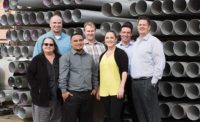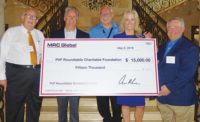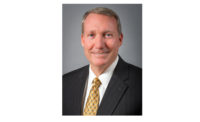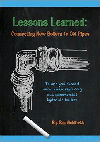
MRC
Global has 210 global service locations in 18 countries, including this premier
stocking location in Perth,
Western Australia. Photo courtesy
of MRC Global
In its first 20 years of existence, McJunkin Supply Co.’s offices were housed on the second floor of the old Arcade building in Charleston, W. Va.
According to the book “McJunkin Corporation: A Pictorial History,” the company, which started in 1921, was located on the second floor of the building above a drug store (with soda fountain), a barber shop, a small pool hall and a fruit stand.
Some 91 years later, the name on the company door in its new headquarters building in Houston now saysMRC Global, its scope of business in the industrial PVF distribution marketplace has dramatically evolved on a global scale and it now trades under the ticker symbol MRC on the New York Stock Exchange.
But one thing has remained constant going back to when McJunkin company foundersJerry McJunkinandBernard Wehrlehad their desks side-by-side in that Charleston office - customer service is king.
“We have a very long history of focusing on the customer,” MRC Global Chairman, President and CEOAndrew Lanetells Supply House Times in the company’s first trade media interview since it went public with its stock offering in April. “We are one of the very unique companies that are doing the same things we did 90 years ago. We are all about the supply business and providing excellence in service to our customers.”

MRC also offers value-added services such as valve automation and
modification. Photo by James LaCombe
Big growth spurts
MRC Global has come a long way since it generated $450,000 in sales in 1922 - a number that ballooned to $1 million just a year later. The company, the product of a merger between McJunkin and Red Man Pipe and Supply in 2007, now has more than 410 global service locations in 18 countries. MRC Global, which employs 4,400 people globally (3,600 in North America), brought in $4.8 billion in revenue in 2011 and is on target to surpass that figure in 2012. Lane notes revenues are predicted to surpass $5 billion this year.“We will continue to grow in 2012,” Lane says. “Our customers continue to have global needs. We have more than $1 billion in inventory on the ground. You will see us continue to expand our global sourcing and global business development.”
That growth has been fueled by an aggressive acquisition plan in recent years. MRC Global, which changed its name from McJunkin Red Man Corp. earlier this year, has made 26 acquisitions in the last 12 years, including 10 key acquisitions since 2007 that totaled $3 billion in revenue.
“We look for acquisitions that expand our capabilities from a product and geographic standpoint and extend our ability to service current customers more effectively,” Lane says. “Our expansion focus is to make a better footprint to serve our global customers and our product lines.”
But MRC Global won’t pull the acquisition trigger just for the sake of adding another company to its burgeoning portfolio. “We look for good, quality people,” MRC Global Executive Vice President-Global Business DevelopmentRory Isaacsays. “This organization is about the customers and the suppliers. We make sure we bring in people with similar cultures and a similar focus. That is really important to us. We’ve walked away from a number of deals because their values and ours were not aligned. We try and find people that have our core values. What makes you what you are is having the right people.”

Andrew Lane, MRC Global chairman,
president and CEO
Providing a complete solution
In general terms the name of the game may be PVF distribution, but MRC Global takes its business approach to a much different level with its customers. The company brands itself as the world’s premier distribution company of PVF products and services - with a giant emphasis on supply chain solutions, as well as warehouse and project management services.“We focus on our customers’ processes and look for ways to move products through their supply chain as efficiently as possible,” MRC Global Executive Vice President-Global Supply Chain ManagementGary Ittnersays.
Isaac adds: “We eliminate duplications in the supply chain. Why should our customers have to manage a big storeroom when we have one five miles down the road? We move material in the most efficient way possible with the fewest touches possible. We use different technologies to make sure the transaction is as efficient as possible. We go pick it and deliver it in two touches instead of the traditional five, six, seven or eight touches depending on their processes and procedures.”
As a complete pipe, valve and fitting distribution solution, MRC also offers value-added services such as valve automation and modification. “We do the engineering piece for our customers,” Isaac says. “Valves are a huge part of our business. A lot of people think of us as a pipe company, which we are. But we are also, by far, the largest valve distributor in the world.” In 2011, valve sales accounted for more than $1 billion in revenue for MRC.
But Isaac has seen a dramatic shift in how the current-day customer approaches business. “Before, a company might put out four or five bids and maybe you got nipples one year and fittings the next year,” he says. “Now we sign agreements for everything, including any products or services that allow us to provide value to our customers. Many of our customers sign five-year agreements now with five-year roll-overs. Some of these contracts have gone on for 20-plus years because we are doing more for them. We’re adding more value and taking more cost out of their supply chain.”
Lane notes MRC Global has some 12,000 customers, but the Top 25, which include the likes of Chevron and Conoco Phillips, make up half the company’s business. Thus providing comprehensive solutions throughout its customer roster is paramount. “These companies really strive for standardization,” MRC Global Executive Vice President of North America OperationsScott Hutchinsonsays. “The key for us is our ability to bring standard processes and products to them across the globe.”
Case in point:In May, MRC signed a global enterprise framework agreement with Shell for the distribution of valves and valve automation services around the world. In addition to the global valve contract, Shell awarded MRC a pipe, fittings and flanges contract for the U.S. and a stainless and alloy PFF contract for Canada.

Gary Ittner, MRC Global Executive VP Global Supply Chain Management
Surviving the storm
With commodity prices high, MRC Global prospered in 2008. “We had a terrific year. The company merger had just come through and then peak activity hit in mid-2008,” Lane says. “There was a lot of steel inflation and oil was $140 a barrel and natural gas was $13 per million Btu. Pricing was very high and that drives our business. Demand for our products was very strong. Steel mills couldn’t keep up. We capitalized on that market.”And then the recession hit, and even a company as large and as successful as MRC Global was affected. “Energy-contracted drilling was down 50% and our revenues were down 30% in 2009,” Lane notes. “It was a drastic change for our company.”
But Lane also saw the economic unrest as a chance to take a big step forward. “Most people re-trench in that situation,” he says. “This was an opportunity for us to get out in front. We knew the market would come back.”
In 2009, MRC Global acquired Transmark Fcx, a leading international distributor of specialty valves and flow-control equipment, and then came back in 2010 with key bolt-on acquisitions of South Texas Supply and Dresser Oil Tools & Supply, which helped enhance its coverage in the Eagle Ford Shale and Bakken Shale, respectively. Acquisitions in the last two years include SPF Australia (the largest stainless-steel piping products distributor in the Southern Hemisphere), Valve Systems and Controls (a Houston-based business unit of Curtiss-Wright Flow Control) and OneSteel Piping Systems, also in Australia.
“We repositioned the company and came through even stronger,” Lane says. “It was a challenging time, but it pulled all of us together.”

Rory Isaac, MRC Global Executive VP Global Business Development
Going public and beyond
The company’s continued growth led to the announcement of its initial public stock offering earlier this year.“The IPO has been part of the company strategy the last couple of years,” Lane says. “This strategy brings in additional equity capital that is being used to pay down some of our debt. We’re proud that we just paid down $350 million of debt. This is the next step for the company. We’ve been in business 91 years and have deep roots in places like Charleston (W. Va.) and Tulsa (Okla.). Now we’re a global player on the New York Stock Exchange. It’s been quite a transformation.”
Lane sees a number of key areas where MRC Global can continue to thrive in the coming months, including continued growth in the mid-stream and upstream segments. While the downstream sector has been slower due to challenging conditions in recent years, MRC expects activity to rebound in the next year due to the backlog of turnaround activity and chemical plant green field projects resulting from the increase in natural gas supply in North America.
“Mid-stream is being driven by new installation to infrastructure,” he says. “With the new Pipeline Safety Act that was passed there are more than 180,000 miles of pipeline that are more than 40 years old. There is a lot of investment there in keeping the old pipeline up to spec and with the new infrastructure being put in place. We’re very well-positioned there. With upstream there are 2,000 drilling rigs in the U.S. right now, 400-500 in Canada and another 1,000 outside North America. We provide a lot of equipment that ties the wells into production. We’re very balanced in all three sectors.”
Lane also sees global energy demand continuing to increase. He cites industry predictions that there will be a 30% increase in global energy demand by 2040. “You now have dependency on coal, oil and gas,” he says. “We serve a fundamental need and see long-term growth in the energy industry. We are committed to supporting our customers’ goals as they seek out new ways to meet the growing demand.”
The country’s recent natural gas boom also has been another key source of business. The company built a major distribution hub in San Antonio to satisfy demand coming out of the Eagle Ford Shale.
“The activity is so brisk down there that Houston is too far away for us,” Ittner notes. “We had to get closer and put something south. We have $25 million of inventory sitting on the ground there. It’s a 58,000-sq.-ft. facility with 10 acres of pipe yard that serves six branches in that Eagle Ford region.”
Another 80,000-sq.-ft. hub was constructed in Chyenne, Wyo., to service seven locations in the Rocky Mountain region. An expansion plan also is in place to double the size of an MRC Global facility in Edmonton, Alberta that serves Canada’s heavy oil region.
“As this activity has shifted, we’ve had to quickly add a significant investment in infrastructure and facilities in these key regions,” Lane says. “Our global and financial stability gives us the ability to go where our customers need us.”

Scott Hutchinson, MRC Global Executive VP of North America Operations
The bread and butter
While MRC Global has skyrocketed as a company in recent years (as evidenced by its recent inclusion on the Fortune 500 list of the largest U.S. companies), it presents a culture that is anything like a worldwide conglomerate.“How did we become the largest PVF distribution company? We continue to listen to our customers,” Isaac says. “One of the reasons we are growing is because our customers have asked us to move into different markets with them. We’ve grown globally because we understand that is what our customers want.”
If that means declining business where MRC Global may not have a particular expertise, so be it. “We focus on our core business,” Isaac says. “We want to be the best at what we do and not be something we are not. That is how we create value for our customers. It can be real easy in business to let people take you down a path you are not prepared to walk down. We listen, but we’re also not afraid to say that is not us.”
Isaac, Ittner and Hutchinson all came from branch backgrounds with a combined 100 years experience with the company. Lane, who came to MRC Global from Halliburton, says the localized, personal touch prevalent at the branch level won’t be going by the wayside.
“We understand the importance of customer interface,” he says. “We want it to always be a personal experience. We were a private and family-owned business. That has been imbedded in our culture. As we continue to grow and serve our global customers, we will continue that branch-level culture and face-to-face interaction.”
Ittner views the entire scope of MRC Global’s operations from employees to customers as one gigantic family.
“We all come from family companies,” Ittner says. “I am extremely proud that we have not lost that sense of family. It’s something we will hold on to no matter how big we get and how many branches we operate. When we say global reach and local touch, we mean it. If you feel that way, you act that way.”









